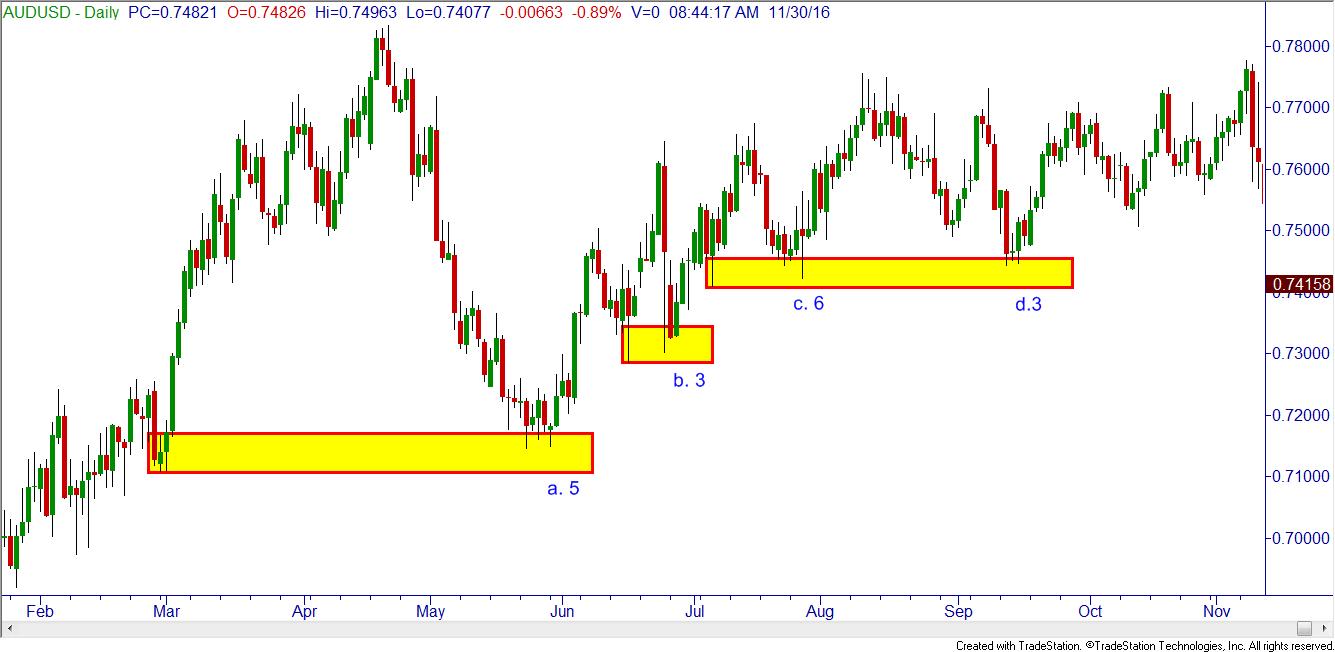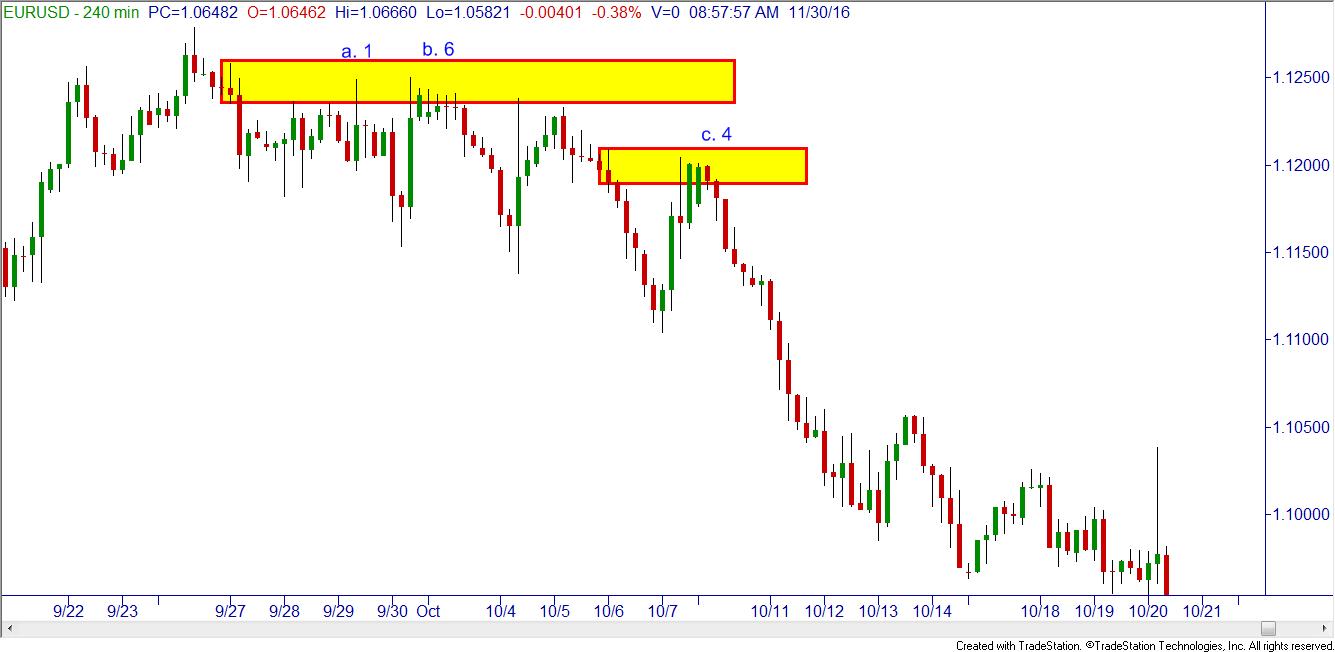Hello traders! This week’s newsletter will discuss one of the most ignored (in my opinion) aspects of trading-the power of patience!
By now, hopefully you have begun to understand the power of our core strategy, that is, to buy to go long during an uptrend in quality demand zones, and to sell to go short during a downtrend in quality supply zones. However, a “problem” that many new traders (and experienced traders!) seem to have is the need to be “first” when price hits their chosen level. While occasionally price hits a level and IMMEDIATELY turns and goes your chosen direction, more often than not the prices hang out in a level for a bit before turning. Many traders will execute quick trade entries, yet this pause in action will shake their confidence in the trade causing many to take themselves out early, or even move their stop loss too early for the trade. When the trader is then out of the trade, very often the chart will then move directly to their target, yet they have no position on! Has this happened to anyone else besides me?
One thing to be aware of, especially when trading from larger time frames like daily or four hour charts, is the fact that THERE IS NO TROPHY FOR BEING FIRST TO ENTER THAT TRADE! I prefer to wait around for a couple of candles to make sure that the zone is holding before entering my trades. But how long should you wait?
My preferred technique is to look back on the chart at the last 3-5 times that my currency pair has turned to see how much time I should give before committing to a trade entry. Let’s look at a chart to see what this looks like:
In this AUDUSD daily chart, I’ve marked in three demand zones. At point marked a. 5, the candles pull back to the demand zone from late April/early March. Notice how much time it spent at the zone before the next move up. Five trading days! (Hence the 5.) If you would have chosen a trade entry on the first candle in the zone, you would have had to be extremely patient to wait for the subsequent boring little bounces out then back into the zone before the move actually happened. What about in the demand zone marked b. 3? From my point of view, it took 3 candles of hanging out around the zone before price finally left.
How about the areas marked c. 6 and d. 3? You guessed it, 6 candles before the turn and then 3 candles. Are you starting to get the idea here?
Let’s try this on the short side, with a slightly smaller time frame.
On this EURUSD chart, I’ve marked in a couple of supply zones. At point marked a. 1, there was only part of one candle before the move to the downside. At b. 6, believe it or not it took 6 candles before the turn happened. I didn’t mark the other turns at that level for clarity sake. At the point marked c. 4, even though the downtrend had clearly started it still took 4 candles before the trend resumed. There are other trade entries along the way which I didn’t mark; hopefully you can spot them by now!
So, what is the lesson in all of this? In my plan, I’ll look back the last few times that price has turned and count how many candles the turns usually take. If the turns take on average 4 candles, my trade entry won’t be until the third candle. Again, I’m not looking to be first! I can wait around without a position on for a few candles to “make sure” that the level is holding before I enter my trade. Yes, I will miss a few trades by being this patient; however, there is always another trade around the corner.
So there you have it. By being patient and entering at the zone after a bit of time has passed you will have less market risk (any time you have a trade on you are taking market risk) because you are in trades for less time, plus you will be less likely to exit too early because “the trade isn’t working yet”. Don’t rush your trade entries!
This content is intended to provide educational information only. This information should not be construed as individual or customized legal, tax, financial or investment services. As each individual's situation is unique, a qualified professional should be consulted before making legal, tax, financial and investment decisions. The educational information provided in this article does not comprise any course or a part of any course that may be used as an educational credit for any certification purpose and will not prepare any User to be accredited for any licenses in any industry and will not prepare any User to get a job. Reproduced by permission from OTAcademy.com click here for Terms of Use: https://www.otacademy.com/about/terms
Editors’ Picks

EUR/USD treads water just above 1.0400 post-US data
Another sign of the good health of the US economy came in response to firm flash US Manufacturing and Services PMIs, which in turn reinforced further the already strong performance of the US Dollar, relegating EUR/USD to the 1.0400 neighbourhood on Friday.

GBP/USD remains depressed near 1.2520 on stronger Dollar
Poor results from the UK docket kept the British pound on the back foot on Thursday, hovering around the low-1.2500s in a context of generalized weakness in the risk-linked galaxy vs. another outstanding day in the Greenback.

Gold keeps the bid bias unchanged near $2,700
Persistent safe haven demand continues to prop up the march north in Gold prices so far on Friday, hitting new two-week tops past the key $2,700 mark per troy ounce despite extra strength in the Greenback and mixed US yields.

Geopolitics back on the radar
Rising tensions between Russia and Ukraine caused renewed unease in the markets this week. Putin signed an amendment to Russian nuclear doctrine, which allows Russia to use nuclear weapons for retaliating against strikes carried out with conventional weapons.

Eurozone PMI sounds the alarm about growth once more
The composite PMI dropped from 50 to 48.1, once more stressing growth concerns for the eurozone. Hard data has actually come in better than expected recently – so ahead of the December meeting, the ECB has to figure out whether this is the PMI crying wolf or whether it should take this signal seriously. We think it’s the latter.
RECOMMENDED LESSONS
Making money in forex is easy if you know how the bankers trade!
Discover how to make money in forex is easy if you know how the bankers trade!
5 Forex News Events You Need To Know
In the fast moving world of currency markets, it is extremely important for new traders to know the list of important forex news...
Top 10 Chart Patterns Every Trader Should Know
Chart patterns are one of the most effective trading tools for a trader. They are pure price-action, and form on the basis of underlying buying and...
7 Ways to Avoid Forex Scams
The forex industry is recently seeing more and more scams. Here are 7 ways to avoid losing your money in such scams: Forex scams are becoming frequent. Michael Greenberg reports on luxurious expenses, including a submarine bought from the money taken from forex traders. Here’s another report of a forex fraud. So, how can we avoid falling in such forex scams?
What Are the 10 Fatal Mistakes Traders Make
Trading is exciting. Trading is hard. Trading is extremely hard. Some say that it takes more than 10,000 hours to master. Others believe that trading is the way to quick riches. They might be both wrong. What is important to know that no matter how experienced you are, mistakes will be part of the trading process.

Best Forex Brokers with Low Spreads
VERIFIED Low spreads are crucial for reducing trading costs. Explore top Forex brokers offering competitive spreads and high leverage. Compare options for EUR/USD, GBP/USD, USD/JPY, and Gold.


